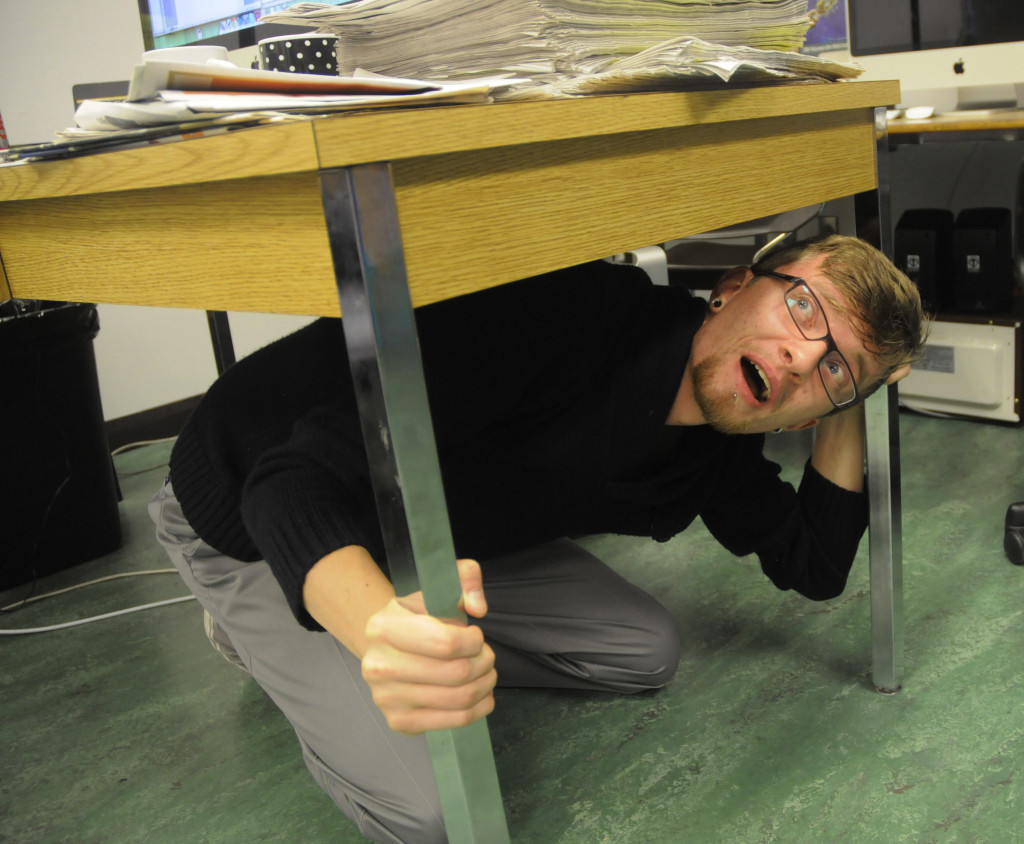
By Chitwan Khosla, Features Editor
Science is about questions and looking for their answers; if Newton hadn’t wondered and looked for why the apple fell to the Earth instead of going up, we might have never found out about gravity. So, like Newton, this section is a quest to find answers in the field of science, logic, and theories. If you have a question about science that you’d like answered, send it to Chitwan at features@theotherpress.ca
What is carbon dating?
In simple terms, carbon dating or radiocarbon dating is a technique used to find how old any specimens or objects (e.g., fossils) are. It is often used in forensic science as well to study some old physical evidence.
The degradation of the radioactive isotope of carbon is the basis of carbon dating. This isotope or form of carbon is found in nature—especially in living organisms—and decays at a very slow speed: half of it decays over 5,568 years, and then again after 5,568 years half of the remaining sample decays. Since the rate of decay is pretty much constant, the approximate date of the death of the living organism or the age of the non-living objects of biological origin can be determined. Carbon dating can help to date objects as much as 50-60 thousand years old, and hence, is a very reliable process for archeologists to employ. This technique was developed by a team of scientists led by Professor Willard F. Libby in late 1940s, and he won a Nobel Prize for it in chemistry in the year 1960.
Is it true that ears help in balancing our body?
Yes, this is very true that your ears are essential for your body’s balance. The vestibular system or the balance system of our body allows us to stand, walk, run, sit in a straight position, and much more. A very important part of this system is our ears. Endolymph—a liquid substance found in inner ear—and tiny sensory hairs found in the inner ear help to keep us balanced. This is because endolymph moves according to gravity and gives information to the brain about the position of the body. The tiny hairs also keep track of body movement and signal the brain. The brain in turn responds to these signals and makes the skeletal and muscular system position in a way so that we stay upright and don’t fall.
You might have noticed feeling dizzy after moving in circles or spinning. This is because after we stop spinning, this liquid substance does not stop immediately as we do and it signals the brain that body is still in motion. This in turn makes you dizzy because your body and brain don’t coordinate until this liquid comes to rest.
What is vegetable oil made of as vegetables don’t have fat?
Myth: Vegetables don’t have any fat. Fact: Vegetable oil is made of vegetables.
Vegetables have fat in them which, though very low as compared to meat, can be extracted to make vegetable oil. Vegetable fat is said to be healthy, and it is recommended to consume some in your diet. However, it is important to note that vegetable oil is extracted from the seeds of vegetables and not the raw veggies that we usually eat. This makes it difficult to say whether it is healthy or not as it is still being debated.
Soy has a large amount of fat in it, making it a major source for vegetable oil. Seeds like peanuts, sesame, sunflower, cotton, and the like are also used to make vegetable oil. Olive oil, almond oil, and coconut oil are kinds of vegetable oil too. These, individually or as mixtures, are widely used as cooking oil, in beauty products, and sometimes in medicines.
Is there more information on Kepler-186f apart from that it is an earth-like planet?
Kepler-186f is one of the latest planets discovered by NASA scientists using the Kepler Space Telescope, which the planet is named after. According to the official website of NASA, Kepler-186f is unique in many ways. Scientists have discovered that along with resembling earth, its size is quite comparable to earth as well. Kepler-186f is part of the Kepler-186 system which is 500 light years away from us, and like earth, is part of a solar system and orbits its star once every 130 days.
Thomas Barclay, research scientist at the Bay Area Environmental Research Institute at Ames, said, “Kepler-186f can be thought of as an Earth-cousin rather than an Earth-twin. It has many properties that resemble Earth.”
This implies that we still don’t know if this planet is habitable like Earth. It may or may not sustain life, so we can’t really imagine buying a house on another planet anytime soon! There is a lot more research left to do yet, but we may expect more breakthroughs in the future.

